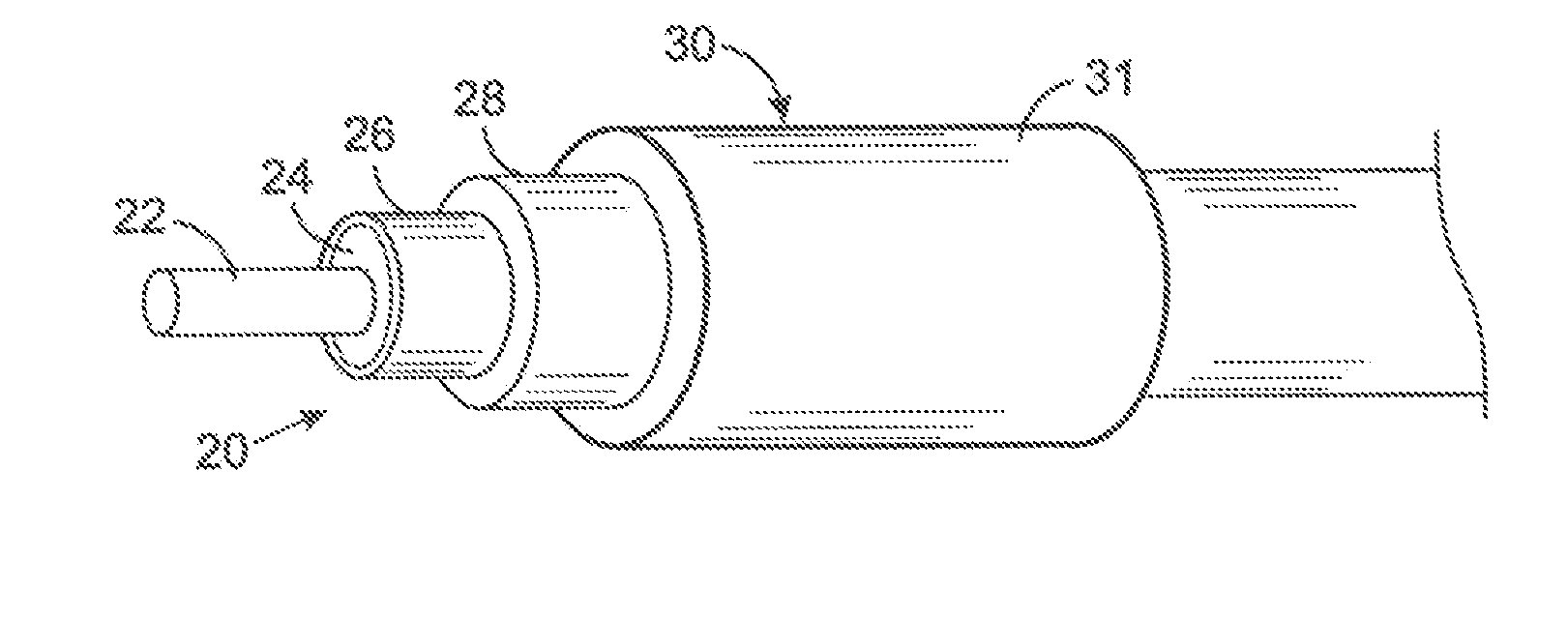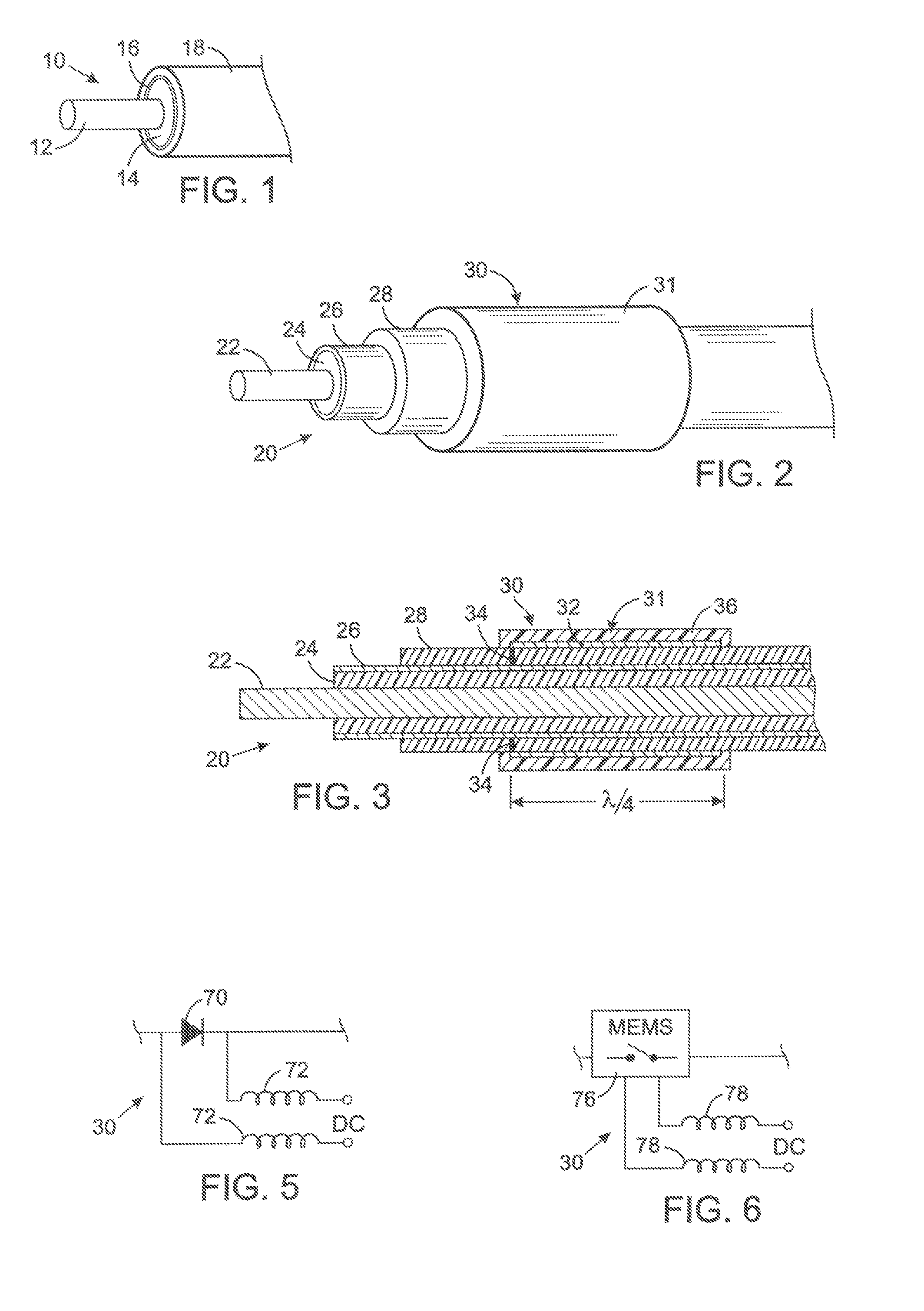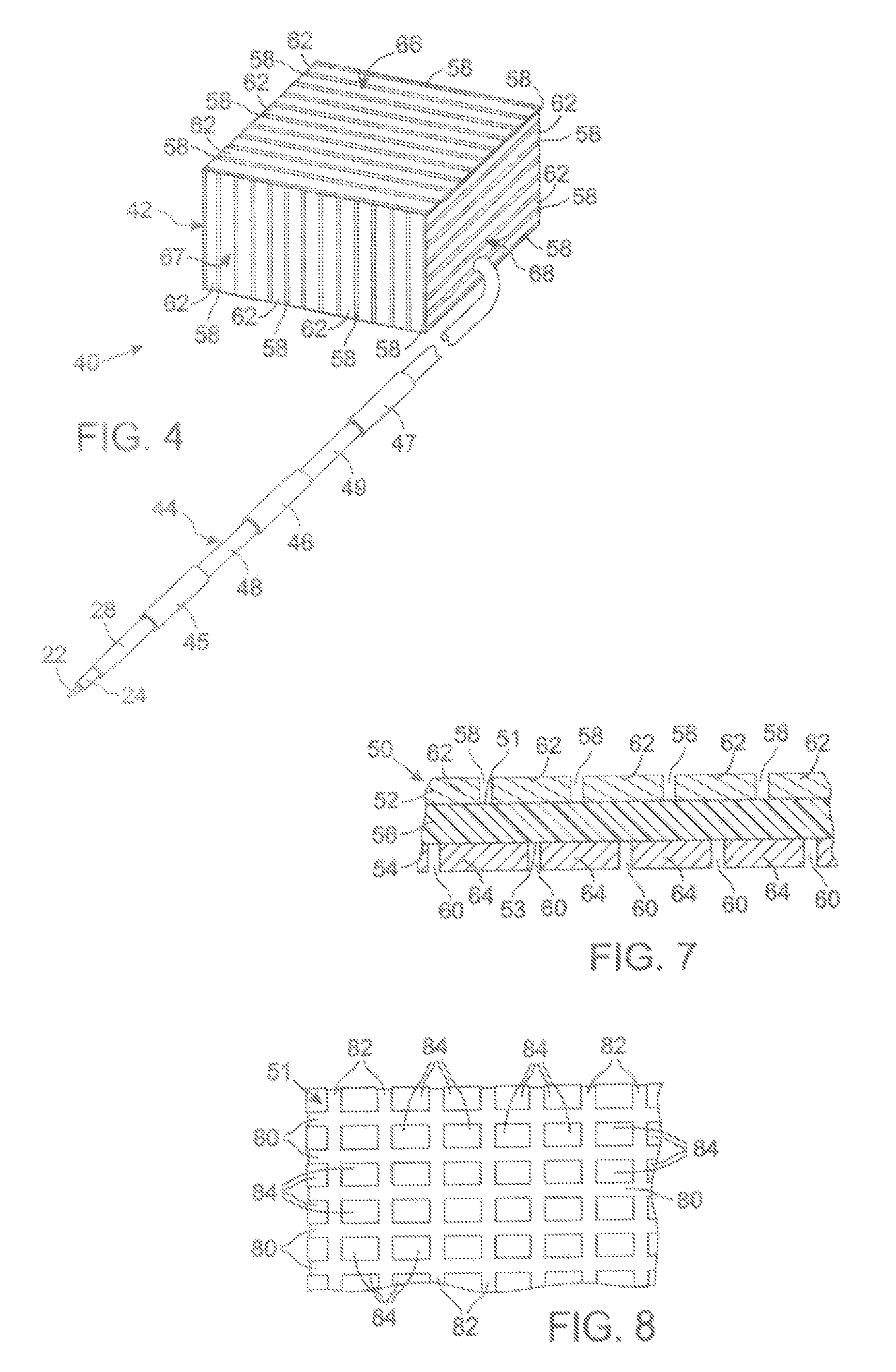MRI compatible implanted electronic medical device and lead
a technology of electronic medical devices and implants, which is applied in the field of implantable electronic medical devices, can solve the problems of adversely affecting patient safety, affecting the imaging performance of magnetic resonance scanners, and degrading the performance of scanners
- Summary
- Abstract
- Description
- Claims
- Application Information
AI Technical Summary
Problems solved by technology
Method used
Image
Examples
Embodiment Construction
[0053] The present technique for MR compatibility of an implanted electronic medical device considers several effects of direct current (DC) magnetic fields, gradient magnetic fields, and RF fields on patient safety, the implanted device and the MRI scanner. As a consequence, the medical device incorporates one or more mechanisms that offer high impedance to currents induced by the MRI electromagnetic fields or prevent such currents from forming in the first place. These mechanisms comprise non-ferromagnetic components which have a magnetic susceptibility close to that of the surrounding tissue; electrical leads with traps for MRI induced currents, and a housing formed by a plurality of electrically conductive segments that combine to provide RF shielding of internal circuit while not providing large enough areas for formation of eddy currents. As used herein, a “trap” is a circuit element that either blocks current induced by the MRI fields or significantly attenuates that currents...
PUM
 Login to View More
Login to View More Abstract
Description
Claims
Application Information
 Login to View More
Login to View More - R&D
- Intellectual Property
- Life Sciences
- Materials
- Tech Scout
- Unparalleled Data Quality
- Higher Quality Content
- 60% Fewer Hallucinations
Browse by: Latest US Patents, China's latest patents, Technical Efficacy Thesaurus, Application Domain, Technology Topic, Popular Technical Reports.
© 2025 PatSnap. All rights reserved.Legal|Privacy policy|Modern Slavery Act Transparency Statement|Sitemap|About US| Contact US: help@patsnap.com



